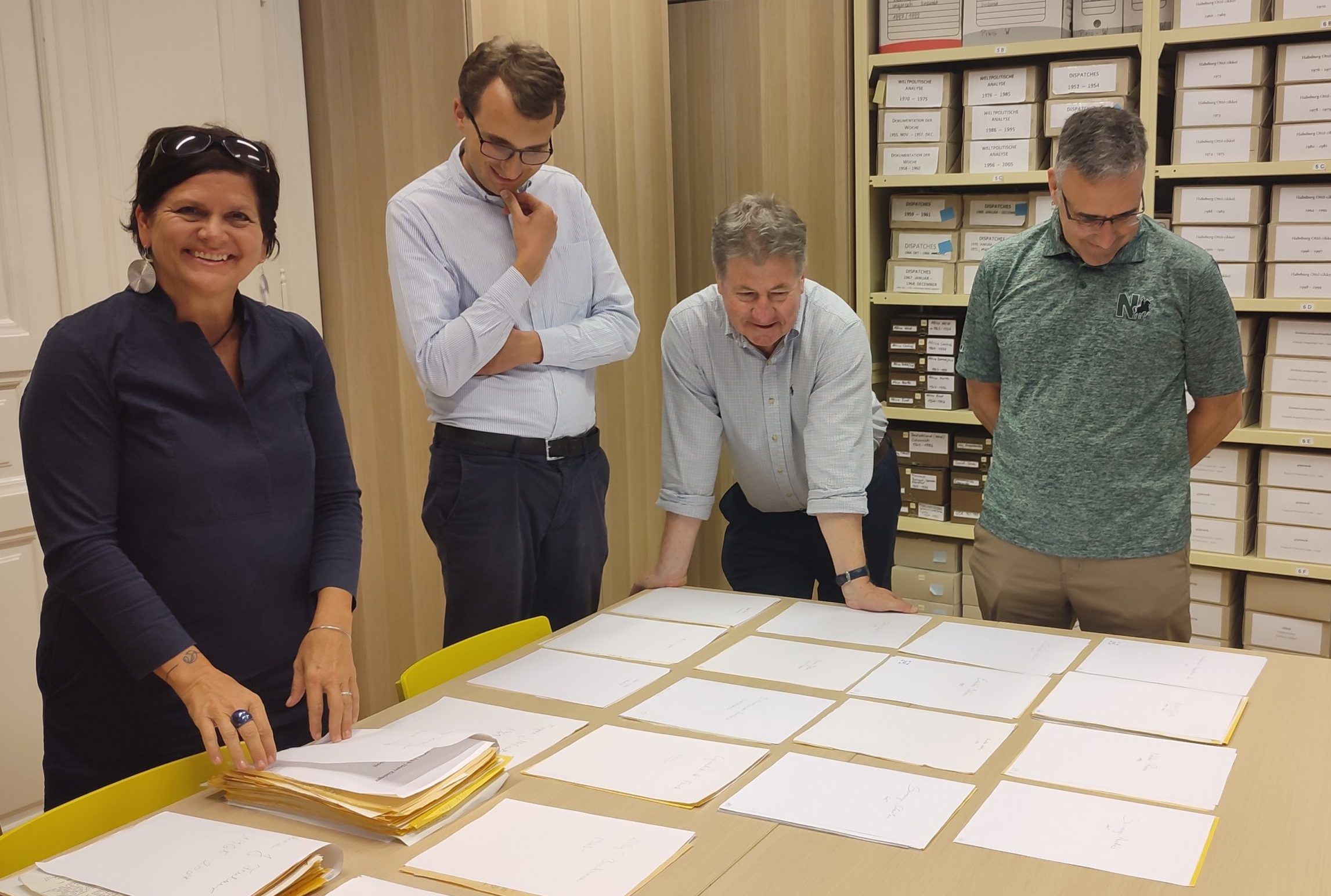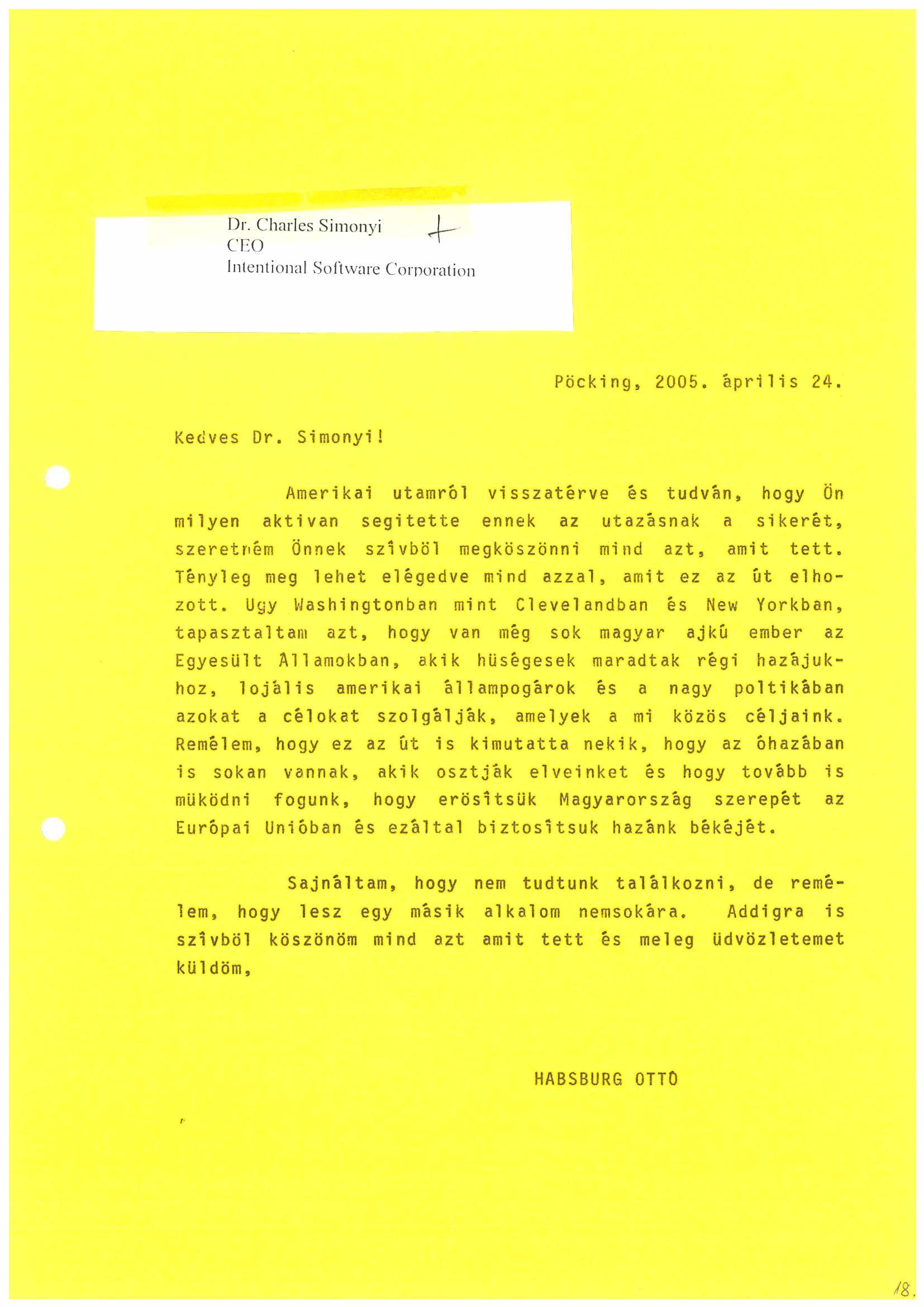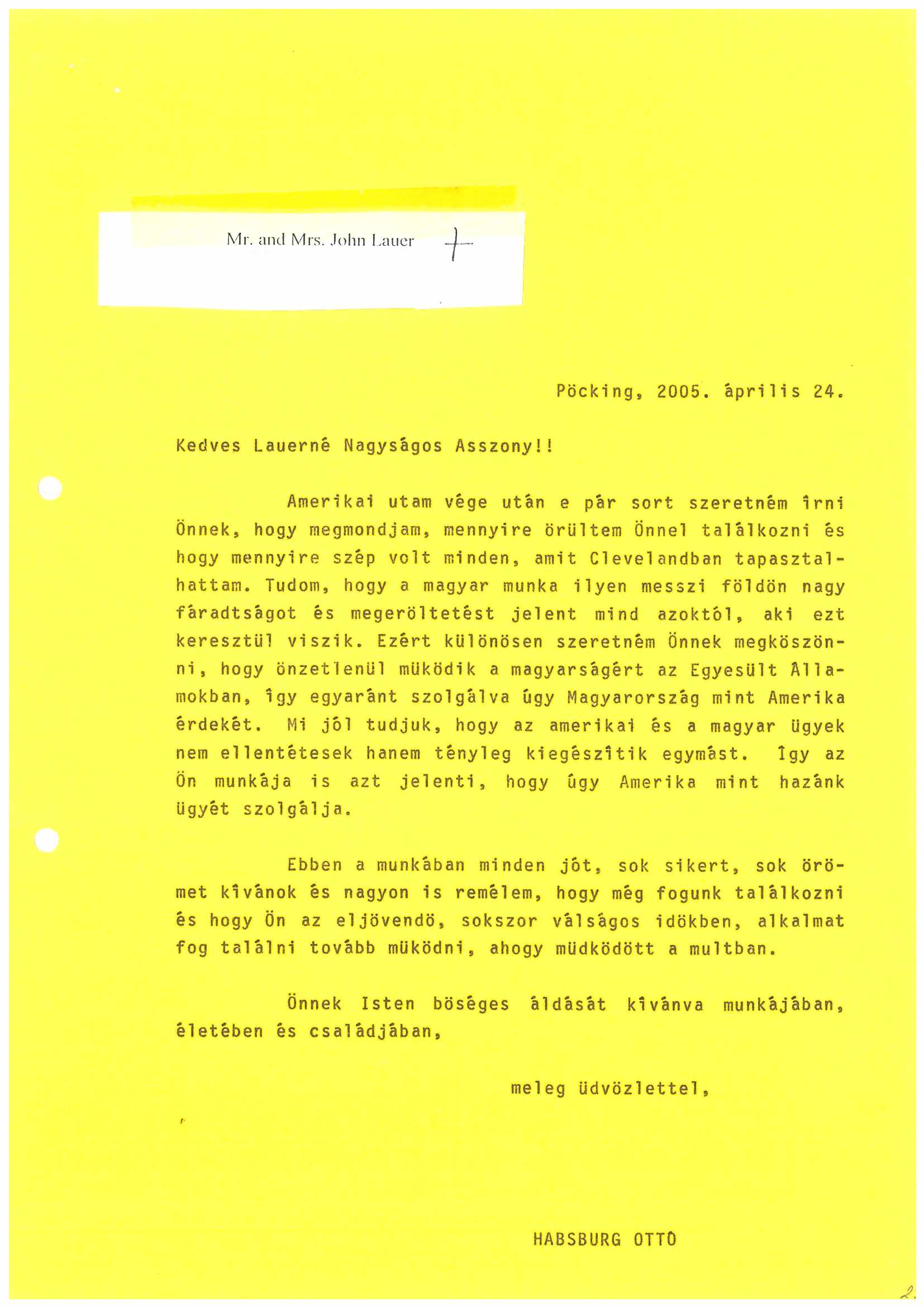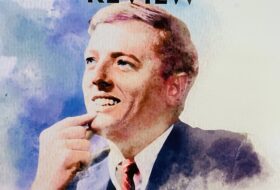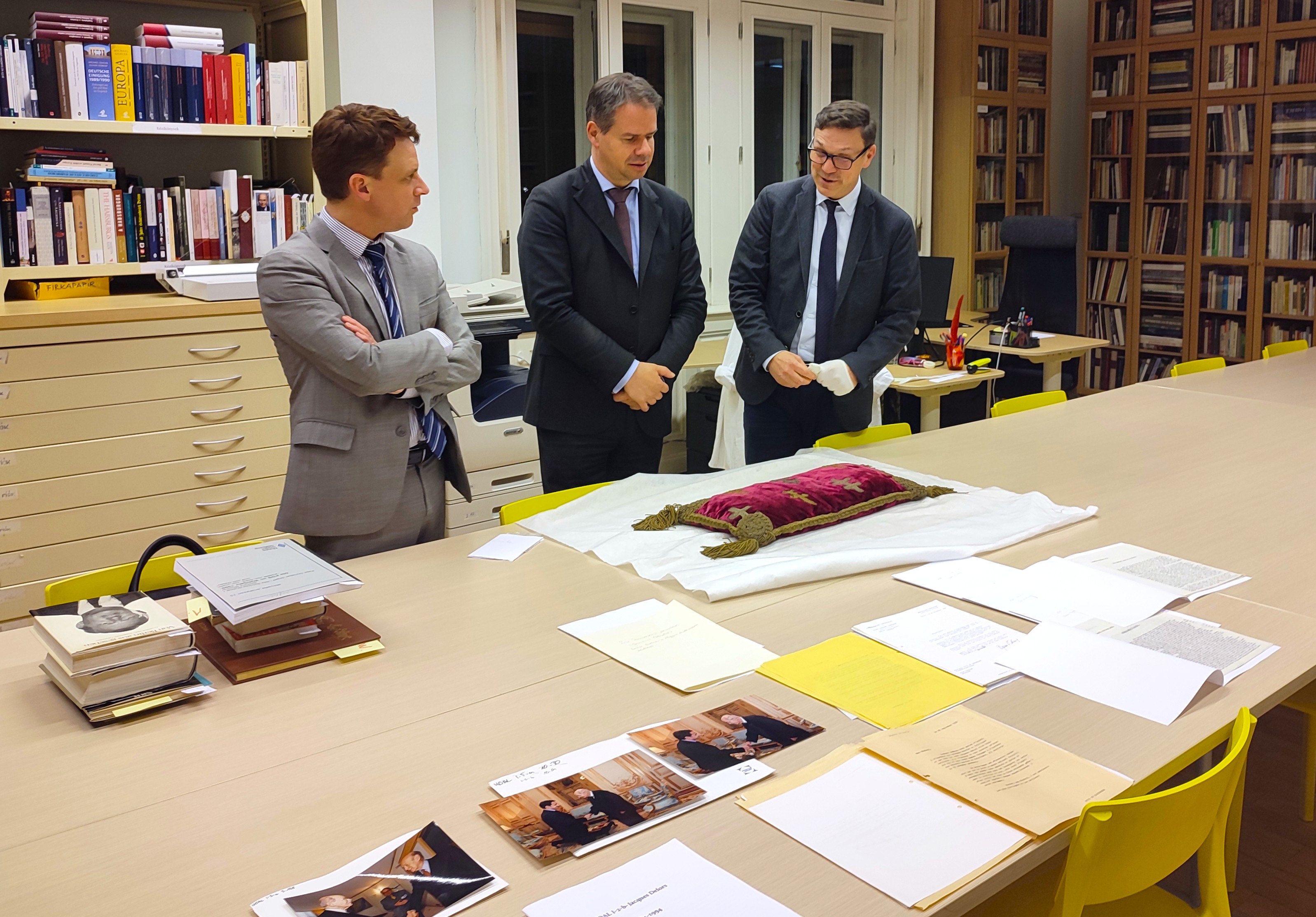Twenty years ago, in the spring of 2005, Otto von Habsburg travelled to the United States with his son, György, at the invitation of the Hungarian Human Rights Foundation and the Hungarian American Coalition, with the assistance of renowned engineer and businessman Charles Simonyi. In addition to visiting New York and Washington, he also stopped in Cleveland, the “second largest Hungarian city in the States.” As part of his busy schedule, he gave lectures at Johns Hopkins University and The Heritage Foundation, met with leading figures of the Hungarian community, heads of international organisations, representatives of prestigious American media outlets, and prominent members of the political elite, regardless of their party affiliation. A symbolic moment of his visit was the wreath-laying ceremony at the Kossuth statue in Washington, a gesture which strived to resolve the centuries-old dichotomy between the “revolutionist-aulic” and “republican-legitimist” traditions, making it clear that, for him, national history is shaped not by mutually exclusive memories, but by a common heritage based on exchange.
Letters of appreciation in Hungarian from Otto von Habsburg to Charles Simonyi and Mr. and Mrs. John Lauer upon his return from his American tour in 2005.
This year, our Foundation is devoting special attention to exploring the overseas connections of our namesake, on the one hand, the political and broader public relations that made Otto von Habsburg a remarkable figure in transatlantic dialogue, and on the other hand, the networks that connected him to the Hungarian diaspora in the United States. For our future efforts, it was particularly valuable and inspiring that our Foundation was able to welcome two prominent representatives of this community: Réka Pigniczky, an authentic chronicler and historian of the extraordinary lives of those who fled Hungary during World War II and especially after 1956, and who was an active participant not only in American Hungarian life but also in Hungarian public life following the regime change; and Endre Szentkirályi, a committed shaper of the Hungarian civil society in Cleveland and beyond, who also explores the past of his community with historical, sociological and literary sensitivity and great insight.
During their visit, they first viewed the documents and photographs in our archives that record the relationship between Otto von Habsburg and the Hungarian community in the United States. Our guests helped us identify the organisers and leaders of the event two decades ago and map Otto von Habsburg’s previous visits. We also discussed the program of our planned events to be held in the Midwestern United States and exchanged ideas about future cooperation.
